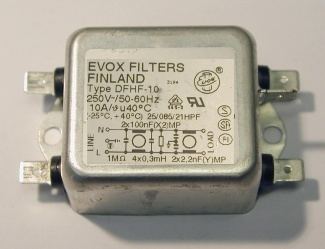 | ||
A line filter is the kind of electronic filter that is placed between an electronic equipment and a line external to it, to attenuate conducted radio frequencies -- RFI, also known as electromagnetic interference (EMI) -- between the line and the equipment.
Contents
In particular, an AC Line Filter is used between the AC power line and the equipment (SMPS or an Electronic Circuit).
Types of line filters
Characteristics of line filters
References
Line filter Wikipedia(Text) CC BY-SA
